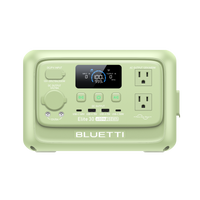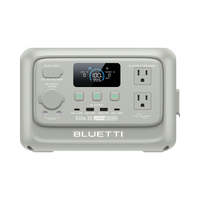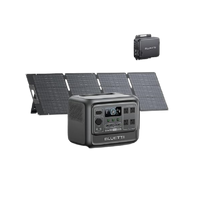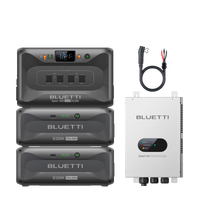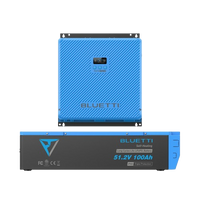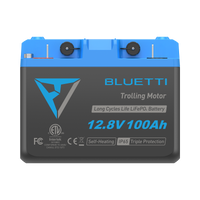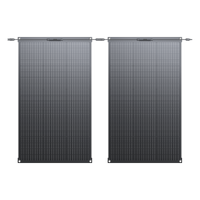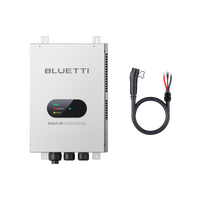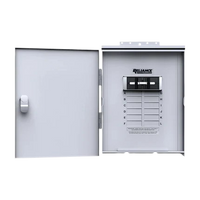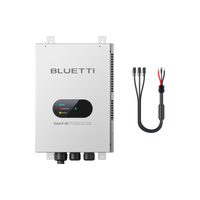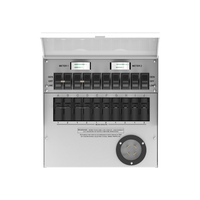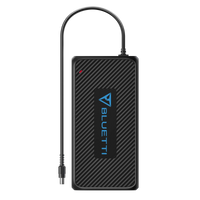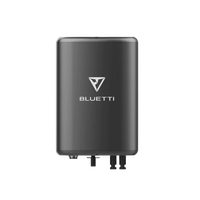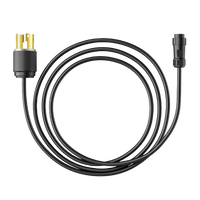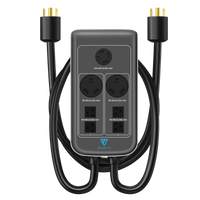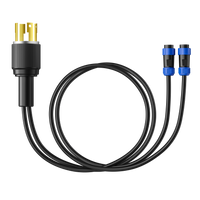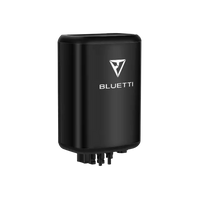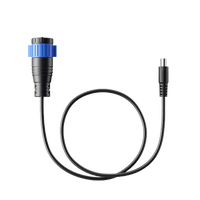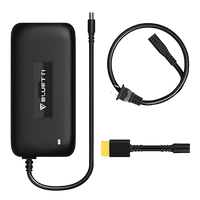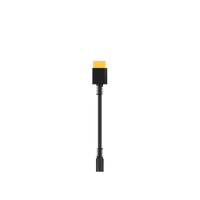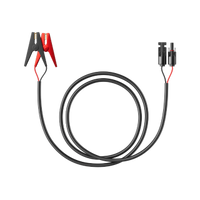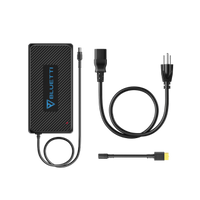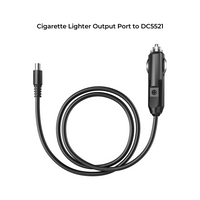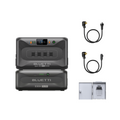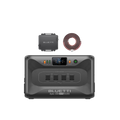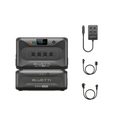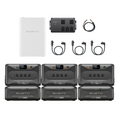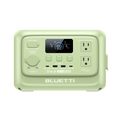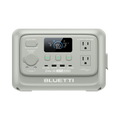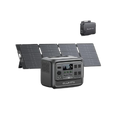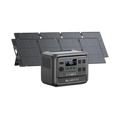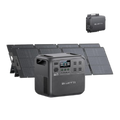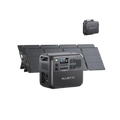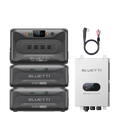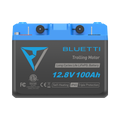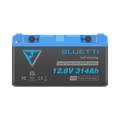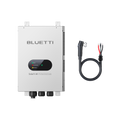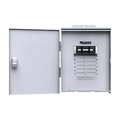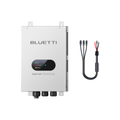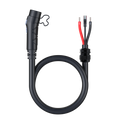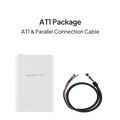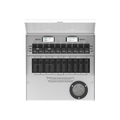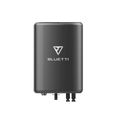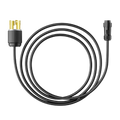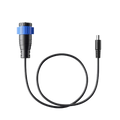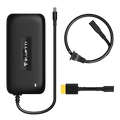During the occurrence of unregulated power failures, it will be wise to own a reliable emergency power source. Home batteries provide this essential backup, so make sure that all your lights and devices keep working. Nevertheless, there is one major factor that will determine the ideal size of the one that matches your household’s energy consumption. This article is all about assisting you to figure out the necessary battery backup size for your home. We’ll start by explaining what it is, how to calculate the size you need, and some key considerations for selecting the best option. Additionally, we’re going to expand our analysis to three BLUETTI battery backups to narrow the options down so you can choose the best one. Get on the train and see what is on the way.
What Is Battery Backup?
It's a critical component that ensures the continuity of certain vital hardware components, like a computer and monitor, by providing them with a secondary power source during power outages. Depending on their size, it can also power other devices.
Beyond providing backup power, many battery backup solutions also act as “power conditioners,” generating a constant stream of electricity for your devices. This is important as an unstable power supply can damage your devices.
Usually, battery backups are rectangular and isolated free-standing ones made to be positioned near a computer. They are somewhat hefty and voluminous mainly because they contain power batteries. Such batteries can provide energy when there is no power from the main source. They are, in most cases, rechargeable as well as replaceable and thereby offer long-term solutions to keep your systems running.
In front of a battery backup, there is usually a power button and possibly other buttons for some functions. On top of that, high-level models might have built-in LCD screens showcasing power usage, remaining power time, and battery charge level.
The other side of the UPS generally consists of an outlet that supplies power through a battery. Many of them are also equipped with surge enhancers and additional outlets featuring network, phone, and cable line protection.
The capacity of the battery backup may vary. To identify the amount you need, calculate your computer’s wattage requirements plus the wattage requirements of any other things you plug into the battery backup. Consult the UPS supplier to estimate a backup time for you.
What Are Your Goals for Your Battery Backup System?
A residential energy-storage system, or home battery backup system, is an all-inclusive setting where a homeowner can store generated electricity for later use. These systems often belong to a smart home energy management system, which regulates the grid, solar, stored energy (battery), and other energy resources to give a home stable energy.
The primary objectives for your battery backup setup can be classified as follows:
- Energy Storage: During off-peak times or when the renewable PV units are generating excess power, the surplus energy is directed toward the home battery, which will be used later for backup.
- Power Supply: When high electricity demand occurs or when renewable energy generation is low, the stored power in batteries is utilized to keep the home up and running.
- Backup Power: In the case of a power outage, certain home battery backup units can support vital devices or the whole household, depending on homeowner demand.
- Grid Interaction: Some home energy management systems even allow homeowners to participate in the electrical grid in dynamic ways. For example, when electricity prices are low, users can charge their batteries. Also, when electricity prices go high, users can use the stored energy and save it for the future as well.
How to Calculate Battery Backup System Size?

Figuring out the right size of a battery backup system for your home does not simply follow one approach. Every home has individual energy demands, and the battery capacity should be in accordance with such needs. The first step here is to record the energy you consume, measured in kilowatt-hours. This is the amount of kWh consumed in over one hour.
To figure out our average household power consumption, take a good look at the billing statements for the last several months. Make sure to check the winter and summer bills when heating and cooling needs are high. Alternatively, a site assessment and an energy audit by a professional installer can provide this data.
The capacity of your battery backup system depends on your energy consumption and its purpose, which could be either emergency power supply or offsetting your energy consumption. The size of the battery is another factor to consider. A battery that is too big can be expensive and overkill, and one that is too small might not have sufficient storage for an outage.
Besides, a battery that can be upgraded later on to address new energy demands may be a good idea. Whether the cells are domestic-scale or utility ones does not matter. The aim is to meet the energy demand.
How Big of a Battery Backup Do I Need for My House?
The home battery backup size is defined by the amount of energy you need. The typical household cell size varies between 10 and 15 kWh. Think about how many watt-hours you consume every day. Then, consider how many hours of backup power you need. Keep in mind that larger capacities store more electricity but are costly. It is a balance between the amount of energy you need and your budget. Make sure the system you pick can be upgraded in case you require more energy in the future.
Tips for Choosing Home Battery Backup
Before you get your backup, think about these: the battery's capacity (measured in kWh), its cycle life (number of full charge-discharge cycles), and its voltage (should be the same as your system). Choose a battery that comes with a reliable monitoring system, is compatible with your inverter, and gives you solid technical support. Ensure safety as well as track record. Although these elements are crucial, don't skimp on them just for a cheaper cost.
BLUETTI 3 Battery Backup for Your House
When it comes to home battery storage, BLUETTI definitely stands out, winning the hearts of its customers with inventive and reliable products. The firm has a wide range of products to cater to varied menacing energy issues. Let us review them:
BLUETTI AC300 + 2*B300

The system brings a reliable solution for off-grid home power systems to life. It contains a 3,000W Pure Sine wave inverter solution capable of handling the 6,000W surge. Hence, it operates flawlessly with even highly demanding appliances. The base capacity of 3,072 Wh, which can be further enlarged to a staggering 12,288 Wh, enables an uninterrupted backup power supply for essential appliances during power shutdowns.
LiFePO₄ battery technology does more than just 3,500 cycles; it is also halogen-free. The system's flexibility is apparent by seven different charging options, including a 2,400W maximum solar input, making it not just greener but also efficient. Be it 240V split phase bonding or a reliable 24/7 UPS backup, this is undoubtedly the right option for continuous power as well.
BLUETTI AC500+2*B300+PV350

As the next level, the AC500 plus 2 B300 batteries, together with the PV350 solar panel are strong evidence of modular design and flexibility. The generator, with its 5,000W rated power and 10,000W surge capacity, will operate both computers and other devices that have a high power consumption during an outage. Besides that, an array of advanced capacity technology between 3,072Wh and 18,432Wh, together with a smart app, provides the flexibility to control from anywhere you are.
With the 240V/10KW split phase system, you can get up to 36.8KWh, which is just enough to keep your home’s shine glowing. Featuring six recharge modes, 16 outlets, and smart living features, this system not only supplies backup but also integrates sustainability every day of your life.
BLUETTI EP500Pro+2*PV350

This is a good choice for off-grid power enthusiasts who are seeking the top power solution option. The 5,120Wh LiFePO4 battery ensures cell longevity and a service life of up to 3,500+ cycles. Thus, it is a reliable and durable electricity reserve.
EP500Pro’s 3,000W pure sine wave output guarantees that your household appliances operate on clean and stable power. Its mobility, together with in-grid and flexible UPS modes, provides unmatched flexibility for emergency backup or daily use. The ability to support multiple devices at the same time, in addition to app remote control and smart touch screens, makes the EP500Pro power station a smart and convenience-oriented one.
Final Thoughts
In short words, the choice of backup battery is crucial. BLUETTI variety provides the most adaptable and resilient solutions to let people with different energy needs find their perfect solutions. Whether for daily energy resilience or significant off-grid living, these systems guarantee both reliability and profitability. With the power consumption analysis and goals in mind, you will be able to select a system that is not only consistent with the power but also in line with green living principles.













